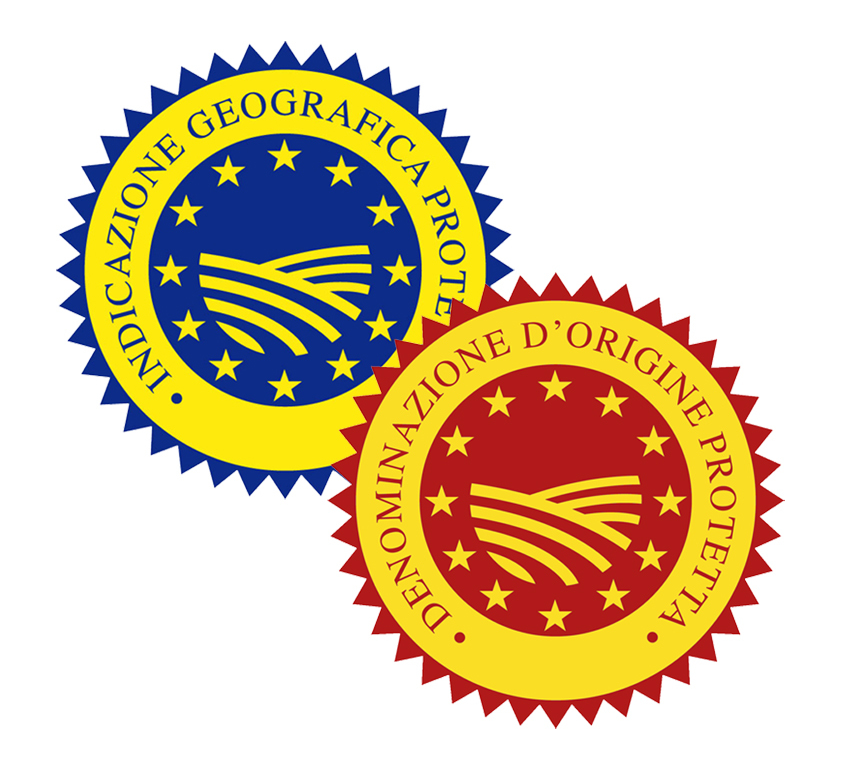No products
Meanings of Abbreviations D.O.C.G. - D.O.C. - D.O.P. - I.G.T. - I G.P.

D.O.C.G. wines - Vini a Denominazione di Origine Controllata e Garantita
The D.O.C.G. wines are regulated by a set of production regulations and are distinguished by a very precise area of origin which may also include sub-areas covering a certain village, hamlet, farm, or vineyard. The designated area is quite limited and is the area which is most suitable for the production of that wine.
A D.O.C.G. may also be a category within a DOC wine, for example, a DOCG may exist for a small area within a DOC area or for a version of a DOC appellation e.g. for the 'Superiore' version of a DOC wine.
The production regulations of D.O.C.G. wines include the same sort of rules as the DOC wines but with tighter parameters. The law foresees that the DOCG status be awarded to wines which have been DOC wines for at least 5 years. DOCG wines must pass a double test with the second checks being carried out during the bottling stage. It is obligatory to indicate the vintage on the label (except for sparkling wines).
D.O.C. wines - Controlled designation of origin
D.O.C. wines are regulated by a set of production regulations and are distinguished by a very precise area of origin which may also include sub-areas which limits the area to a certain village, hamlet, farm, or vineyard.
It is clear that the more the area of origin is limited and the regulation variables are multiplied, that the wineries and the amount of which will fall into this category will decrease. This then increases the quality of the wine which is produced.
The production regulations of D.O.C. wines must outline:
- the name of the appellation (the name of the D.O.C.)
- the area of origin of the grapes
- the maximum yield of grapes and wine per hectare
- the minimum potential alcohol level of the grapes
- the chemical and organoleptic characteristics of the wine as well as the minimum alcohol content of the wine
- the production conditions (climate, soil, elevation, sun exposure, etc.)
- the layout of the vineyards in terms of plant density, types of training systems, pruning
- how the sensory analysis examinations are to be carried out
- minimum period of ageing in wood or in bottle
- in which specific area the wine must be bottled.
D.O.C. wines are subject to physical-chemical and organoleptic tests during the production stages which are carried out by special examination panels.
I.G.T. wines - Typical geographical indication
I.G.T. wines are regulated by a set of production regulations and are distinguished by an area of origin which is generally rather large. The production regulations for I.G.T. wines must outline:
- the name of the I.G.T. wine
- the geographical area
- the list of approved grape varieties which may be used to produce that wine
- the types of wine which may be produced, including the colour
- the maximum yield of grapes per hectare
- the minimum potential alcohol of the grapes
- the minimum alcohol content of the wine
- the corrective practices which are allowed.
I.G.T. wines have the obligation to specify on the label:
- all the information obligatory for table wines
- the wording 'Indicazione Geografica Tipica' and the name of that specific IGT.
It is also possible to specify further details such as the grape variety, the vintage and other details about the producer and the wine.

D.O.P. - Protected designation of Origin P.D.O.
D.O.P. is a trademark of legal protection of the designation of origin which is awarded by law to food and wines which have particular characteristics due mainly or exclusively to the area in which they are produced.
The geographical environment includes both natural (such as climate, environmental characteristics) and human factors (production techniques passed down over time, craftsmanship and savoir-faire), which, when combined together produce a unique product which cannot be replicated outside of a given area of production.
For a product to be awarded the D.O.P status, the phases of production, processing and preparation must take place within a defined geographical area.
A producer of D.O.P. prdoducts must follow the strict rules of production set out in the production regulations. Compliance of these rules is checked by a specific body.
To distinguish the D.O.P. products from the I.G.P. products, the colours of the D.O.P logo have been changed from yellow and blue to yellow and red, provoking concern in those who would have considered it more appropriate to change the colours of the I.G.P. logo.
I.G.P. - Protected Geographical Indication
The protected geographical origin status which in Italy is called I.G.P. is a mark of origin that is normally attributed to agricultural and food products which have a certain quality, reputation or other characteristic resulting from the defined geographical area in which they are produced, processed and/or prepared.
To get I.G.P. mark, at least one stage of production must be carried out in a specific area.
Producers of I.G.P. products must follow the strict rules set out in the production regulations.
Compliance of these rules is checked by a specific body.
